Life style
Towards a disability-friendly health system
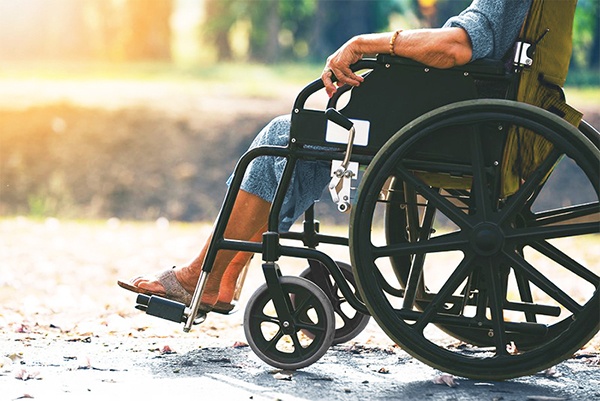
Gaps in the health care system burden those with disabilities with an added cross. In the backdrop of the International Day of Persons with Disabilities which fell on December 3, we spoke to many stakeholders to push for collective national interventions to enhance the quality of life of those with disability.
by Randima Attygalle
Nisha Shareef from Kandy was born with a rare spinal cord abnormality which left her wheelchair-bound for life. Introduced to rehabilitation at age 11, Nisha’s quality of life improved. Thanks to the vocational training she received through the Ragama Vocational Training School, she learned the art of watch-mending. Today at 50-years, she runs her own business in the Kandy town, her example empowering fellow wheelchair users.
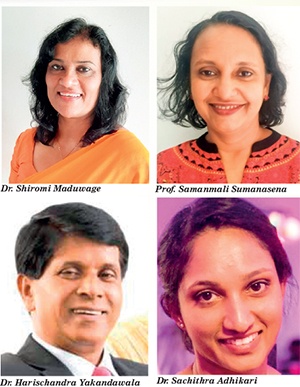 Health challenges for those in Nisha’s shoes are many. Inability to control the passing of urine, catheter and diaper dependency, frequent urine infections and bed sores are among them. Management of all these issues is costly says Nisha who lobbies for a special concession for adult diapers and other medication required by those with disabilities. “Accessibility to public toilets including those at hospitals is a nightmare for us,” she says. Nisha urges the health authorities to have disability-friendly infrastructure at hospitals and to dedicate a help desk and a hotline at least at Teaching Hospitals to assist those with disabilities.
Health challenges for those in Nisha’s shoes are many. Inability to control the passing of urine, catheter and diaper dependency, frequent urine infections and bed sores are among them. Management of all these issues is costly says Nisha who lobbies for a special concession for adult diapers and other medication required by those with disabilities. “Accessibility to public toilets including those at hospitals is a nightmare for us,” she says. Nisha urges the health authorities to have disability-friendly infrastructure at hospitals and to dedicate a help desk and a hotline at least at Teaching Hospitals to assist those with disabilities.
Many young girls and women with mental disabilities and those who are vision impaired left alone at homes are often sexually exploited, she points out proposing a state-supported day-care system to shelter them while their parents or other care givers are at work. This would help ensure their safety.
Having fallen off a rambutan tree at ten, Lasantha Chandimal from Dampe off Madapatha, became paralyzed. Having lost both his parents by 15, Lasantha’s life took a turn for the worse. The Samaritans at the Ragama Rehabilitation Hospital not only uplifted him from a bedridden patient to a wheelchair user but also trained him to maneuver a special tricycle. Lasantha, 36-years old today, has lost his job with the closure of the plastic factory he worked at. His wife, a wheelchair user herself, also worked there.
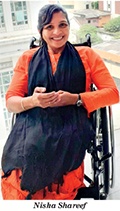 A spinal cord injury makes Lasantha often susceptible to kidney dysfunction. “I’m a catheter-user and I developed a urine infection during the lockdown which left me helpless with no access to medical treatment. With my temperature running high due to the infection, I called for an ambulance several times to no avail. Finally I had no choice but to scrape my savings and get treatment at a private hospital.”
A spinal cord injury makes Lasantha often susceptible to kidney dysfunction. “I’m a catheter-user and I developed a urine infection during the lockdown which left me helpless with no access to medical treatment. With my temperature running high due to the infection, I called for an ambulance several times to no avail. Finally I had no choice but to scrape my savings and get treatment at a private hospital.”
The absence of special assistance at OPDs, indifference of the support staff and exploitation of those with disability by some, makes matters worse. Improving disabled-health literacy at ground level, improving sanitation facilities for people with disability in hospitals, sensitizing support staff and creating awareness on available help devices are among Lasantha’s suggestions to ease the burden of this community.
Over a billion of people, about 15% of the world’s population, according to the World Health Organization (WHO) have some form of disability. Half those with disability cannot afford healthcare, compared to a third of those without disability. People with disability are more than twice as likely to find healthcare providers’ skills inadequate and people with disability are four times more likely to report being treated badly; and they are nearly three times more likely to be denied healthcare, WHO affirms. The World Bank literature on ‘Disability Inclusion’ documents that ‘many persons with disabilities have additional underlying health needs that make them particularly vulnerable to severe symptoms of COVID-19, if they contract it. Persons with disabilities may also be at increased risk of contracting COVID-19 because information about the disease, including the symptoms and prevention, are not provided in accessible formats such as print material in Braille, sign language interpretation, captions, audio provision, and graphics.’
Translating sensitization on ‘disability and rehabilitation’ into practical reality is urgent, points out Manique Gunaratne, Manager Specialized Training and Disability Resource Centre of the Employers’ Federation of Ceylon. Manique who lost her vision in her 20s due to Retinitis pigmentosa had no proper local guidance to a rehabilitation system. The overseas doctors whom she consulted empowered her on ICT systems available for vision impaired people. “This has made me what I am today,” says the activist who lobbies for help desks which could offer guidance for people with disabilities and their families to make informed decisions. “Very often when a child with a disability is born, parents have no clue what to do with it. If the medical condition turns out to be disability, they are even more helpless,” notes Manique who also proposes a ‘Priority Card’ on health nee
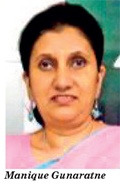
ds and making disability representation stronger at policy-level within the health sector.
The role of collaboration between doctors, physiotherapists and the beneficiary in determining the best assistive device cannot be understated says H.D. Mala Nandani, Administrative Officer, Rehab Lanka which manufactures s
uch devices. “An assistive device has to be a customized and very often there is little awareness among the poorest of the poor who depend on a donated wheelchair which could very often compound the disability.” The National Secretariat for Persons with Disability provides a stipend for such devices, she adds. The local manufacturing volume of assistive devices should be increased for better availability, notes Mala who lost the use of one leg due to a vaccination mishap as a child. “At ground level, the knowledge of personal hygiene among those with disabilities is very poor; hence there should be a system similar to that of midwives to help the families of the disabled in terms of knowledge and guidance to proper health channels.”
The COVID emergency situation which put the local public health system under unprecedented strain has driven the health authorities to design new interventions including meeting the needs of people with disabilities, notes Dr. Shiromi Maduwage, Consultant Community Physician from the Youth, Elderly and Disability Unit of the Ministry of the Health. “We are now developing a system to reach out to those in need in future emergencies. We have already launched a programme to empower care givers during the pandemic. This is facilitated by the National Secretariat for Persons with Disability.

“
A system to improve the COVID-related health messages through Braille and sign language is also underway she says. While the state provides a monthly disability allowance, certain gaps in the system including the need for disabled-friendly infrastructure have been identified; and these need to be bridged, says Maduwage. “The elderly population is growing and disability will be an added burden. Community based rehabilitation is already being strengthened by the health sector to mitigate the challenges and ground level officials sensitized though the MOH divisions.”
Upgrading the school curriculum to incorporate health issues of those with disabilities including their sexual an
d reproductive health and safety can help sensitize future health policy makers to
catering for their needs, remarks Dr. Harischandra Yakandawala, Medical Director of the Family Planning Association and Consultant to the project on sexual and reproductive health during emergencies. “People with disabilities often have barriers in accessing information and we are collaborating with several agencies in addressing this including making online counseling services accessible by victims of gender based violence.” Women and girls with disabilities are the most vulnerable to sexual violence which could result in unwanted pregnancies and sexually transmitted diseases, he says citing the need for organized shelters to provide care for young girls and women enabling their caregivers to be productively employed during day time.
Encouraging all parents to “dream for their child” despite odds, Samanmali Sumanasena, Professor in Paedeatric Disability and Head of the Department of Disability Studies, Faculty of Medicine, University of Kelaniya, urges all partners in paediatric health services to support families with children with mental and physical disabilities. “Research shows that early intervention can make children more cognitively competent and they can be developed into very productive citizens”. In this process, access to correct information, proper referral systems, child intervention services, updated technology for optimum benefits, access to general health care and family support systems are imperative, she says. Training parents and caregivers to routinely intervene to improve their children’s quality of life is important, she points out. Lack of specialists who
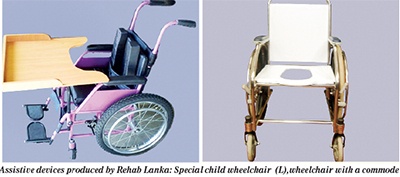
can address the concerns of children with special needs in the country is a major bottleneck in enabling wider reach. The Special Needs Programme which was launched in Colombo District in July to meet this challenge is being expanded to the rest of the island as well, says Prof. Sumanasena.
Rehabilitation which is recognized as a human right by the United Nations’ Convention on the Rights of Persons with Disabilities, improves the functioning status of people with disability to achieve the highest possible functional outcome, notes Dr. Sachithra Adhikari, Acting Consultant in Rehabilitation Medicine from the Rheumatology and Rehabilitation Hospital, Ragama.
“Lack of an established care pathway directed towards rehabilitation following initial treatment of disability, is a major drawback. Rehabilitation services are provided only by a few hospitals which hardly meet the need.” She goes on to note that the need to generate awareness on the importance of rehabilitation and its cost benefit both among the healthcare professionals and the public is urgent. Drawing attention to limitations in available rehabilitation personnel and infrastructure, she said the lack of coordinated service provision, leadership for financial and administrative support required for rehabilitation service are problems that need addressing. Also, social acceptance of those with disabilities rather than mere sympathy is important together with sensitivity to their plight.
- News Advertiesment
See Kapruka’s top selling online shopping categories such as Toys, Grocery, Flowers, Birthday Cakes, Fruits, Chocolates, Clothing and Electronics. Also see Kapruka’s unique online services such as Money Remittence,News, Courier/Delivery, Food Delivery and over 700 top brands. Also get products from Amazon & Ebay via Kapruka Gloabal Shop into Sri Lanka.
Life style
LUXASIA aims to lead luxury beauty’s growth in Sri Lanka
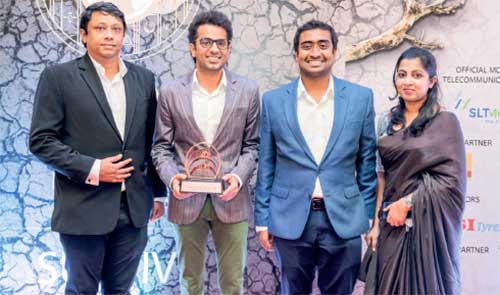
Sri Lanka is a land renown for stunning natural beauty. Yet, LUXASIA still managed to usher in a different kind of beautiful to the market through its expertise in luxury beauty retail and omni-distribution.
In November 2019, LUXASIA unveiled its inaugural classy beauty counters at Odel, One Galle Face. Since then, it has brought enchanting fragrances from luxury brands such as Burberry, Calvin Klein, Gucci, and Marc Jacobs, as well as trendy skincare from KORA Organics to beauty-lovers in an exquisite and captivating retail format.
Now, having successfully overcome the challenges in 2020 imposed by COVID-19 and related lockdowns, LUXASIA is ready and excited to thrill Sri Lankan consumers again. This time, it is with the launch of both skincare and make-up collections from the prestigious Japanese beauty brand, Shiseido. Arriving with a glamorously magnificent pop-up at One Galle Face from 8 to 14 February 2020, LUXASIA promises to bring memorable consumer experiences and a feast for the eyes that showcases the best in Japanese beauty.
Leading up to this pop-up, LUXASIA partnered the Key Opinion Leaders (KOLs) and top influencers of Sri Lanka to excite the beauty community with a sneak peek of what Shiseido have to offer. This campaign garnered more than 100,000 social interactions, with over 1.2 million social media impressions, piquing consumers’ fascination in Shiseido’s award-winning and best-selling serum, The Ultimune Power Infusing Concentrate.
Looking ahead into 2021, LUXASIA aims to continue delighting consumers with even more fresh retail innovations to spice up the luxury beauty scene in Sri Lanka. Soon, fragrance enthusiasts can expect a unique pop-up of all the scents that Luxasia carry, featuring new launches from Davidoff and Calvin Klein, as well as other interesting novelties. Beauty-lovers can also expect more limited edition products and gifts-with-purchases, interesting workshops, as well as seasonal offerings in the coming months. Concurrently, LUXASIA also aspires to continue grooming the Sri Lankan beauty community through more entertaining collaborations with KOLs throughout 2021.
LUXASIA sees immense potential in Sri Lanka’s fast-growing beauty market and has been its voice in the international beauty industry. For some time now, LUXASIA has been relentlessly reaching out to numerous luxury beauty brands across to world to interest them in Sri Lanka. While it is encouraging to see the first-fruits, LUXASIA is aiming much higher. Forging ahead, LUXASIA strives to champion and lead the growth of luxury beauty in Sri Lanka, through even more partnerships with great brands, and by continuously delighting consumers.
Life style
Newly published guide opens many windows on whale watching
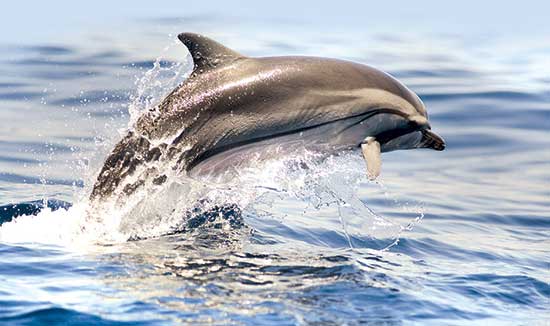
by Ifham Nizam
Shipping lanes to the south of Dondra pose the threat of ships colliding with whales as the area has very rich marine life which also attracts whale watching boats, says prolific wildlife writer and photographer Gehan de Silva Wijeyeratne, author of the recently published ‘A Naturalist’s Guide to the Mammals of Sri Lanka’.
He says international shipping industry organizations have written to the government to push back the existing shipping lanes and if no action is initiated, there is the danger of whale watching boats colliding with vessels.
Dr. Susannah Calderon and her colleagues at the University of Ruhuna have recommended the shipping lanes be moved 15 nautical miles south. The cost impact to all concerned will be negligible, but it significantly improves safety at sea, especially at night when the sea is dotted with the lamps from hundreds of small fishing crafts in the path of giant container carriers.
“It is primarily a safety issue though an important secondary impact will be that it reduces fatal collisions with whales, while generating favourable publicity for the government of Sri Lanka. It boils down to moving the shipping lanes further south and saving lives, Wijeyeratne stressed in an interview with The Sunday Island.
Asked what’s special about his latest publication, he said: “This is the first photographic field guide which covers nearly all of the mammals found in Sri Lanka. It covers 96 per cent of the land and marine mammals. The book, which is portable and affordable, also contains a large number of images from 40 photographers which are practically useful in the field to identify  a mammal to species level. It also covers a number of small, discrete, nocturnal mammals whose existence that even many local wildlife enthusiasts will not be aware of.”
a mammal to species level. It also covers a number of small, discrete, nocturnal mammals whose existence that even many local wildlife enthusiasts will not be aware of.”
On the book’s coverage of the marine mammals, Wijeyeratne said there are two noteworthy aspects. Firstly, it covers all the species recorded in Sri Lankan waters expect for one, the Omura’s Whale. This will be included in a second edition. Secondly, it uses images of the whales and dolphins (cetaceans) which will show the animals the way a whale watcher will see them on the surface.
Artwork that shows the whole animal is important, but in field conditions, they are often of limited value to identify cetaceans which only show a little of their upper body in sections at a time they surface.
Q: You were the first to publicize that Sri Lanka was the best location for Blue Whale sightings and offered the best chance to see a superpod of Sperm Whales. Can you explain briefly how you set about branding Sri Lanka as a top international destination for whale watching?
A:
I started with field work to ascertain the facts and launched a media campaign initially with Jetwing Eco Holidays and Jetwing Hotels which was supported over many years by the Sri Lanka Tourism Promotion Bureau (SLTPB) and others in the media and tourism business. I have published 37 articles on whale watching in Sri Lanka. The first, in May 2008, was pivotal as it boldly stated that Sri Lanka was best for Blue Whales. This set everything in motion. My articles give due credit to many people who were a part of this amazing story. This includes Dr. Charles Anderson who first told me it would be feasible to see Blue Whales from the South.
A Belgian millionaire philanthropist who prefers to remain anonymous and helped create the infrastructure for whale watching by 13 tsunami affected fishing youth who set up Mirissa Water Sports and Sue Evans who was important for connecting all of us and Anoma Alagiyawadu (the Jetwing Lighthouse Naturalist) whom I tasked with collecting the initial data for the Encounter Rates I publicized in the media.
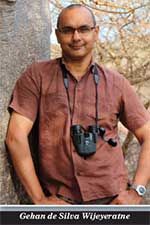 Remarkably, no Sri Lankan marine biologist played any role in publicizing whale watching in the early years. However, soon after, they benefited by being thrust into the media spotlight by film crew researchers who had read the publicity which began with my various widely disseminated articles. Having read them, and sometimes after conversations with me, the film crews and the press came to Sri Lanka and incorporated local marine biologists into their story.
Remarkably, no Sri Lankan marine biologist played any role in publicizing whale watching in the early years. However, soon after, they benefited by being thrust into the media spotlight by film crew researchers who had read the publicity which began with my various widely disseminated articles. Having read them, and sometimes after conversations with me, the film crews and the press came to Sri Lanka and incorporated local marine biologists into their story.
At the time I broke the first story, I do not think any of the local marine biologists had even one image of a Blue Whale of a publishable standard or had any idea that Sri Lanka was the best place in the world to see Blue Whales. Hopefully, the increased profile of local marine biologists has made it easier for them to raise the funds needed for their important research.
Q: Did the Sri Lanka Tourism Promotion Bureau help your efforts with publicity and branding?
A:
Yes indeed. At the start of the publicity campaign, we produced a series of informative and attractive publications designed by Chandrika Maelge. These were printed and distributed at key consumer and travel trade fairs such as the Bird Fair, WTM and Destinations where a number of important press and tour operators were informed about Sri Lanka being a good place for whales. At some of the press drinks events in London hosted by Jetwing Eco Holidays, around 35-45 press people would attend. These events were held in collaboration with the London Office of the SLTPB.
In some years, As many as three of these press events were held allowing personal interaction with a wide pool of media people. Another important and later development is the role played by Nalin Perera who ran the SLTPB office in London for several years and attended many consumer and travel trade fairs. I had developed media briefs for him which he would print and distribute. In one conversation, he estimated that he had printed and distributed over 10,000 copies of this material.
There were others who also disseminated my stories to the international press; a notable example being Chitral Jayatilake who shared my publicity pdfs with various wildlife documentary makers he invited to Sri Lanka.
Q: Did everyone readily embrace your ideas?
It took a couple of years. I remember even into the second year of the publicity campaign there were doubts from the big companies in tourism.
I remember Srilal Miththapala who was then President of The Hotels Association of Sri Lanka speaking to me and joining a celebrity whale watching event I was leading with Shyamalee Tudawe. This was organized by Olivia Richli of the Amangalla in Galle.
Srilal wanted to report back to the association if there was any truth to the claims being made by me about how easy it was to see Blue Whales. On the coastline, the people running small guesthouses readily embraced the story as tourists who were reading my stories turned up with copies of my articles and asked for boats to take them whale watching. The international press also readily took it on as I provided credible data.
Q: What do you say to criticisms that whale watching needs better regulation?
I agree on the need for better regulation and higher standards. The tourism industry has played its part in publicizing whale watching. Other state agencies also need to step up their efforts to regulate the industry in a way that is good for the welfare of the animals and provide a good visitor experience.
Q: What do you expect ‘A Naturalist’s Guide to the Mammals of Sri Lanka’ to achieve?
I would like people to understand that there is still a lot to be discovered about Sri Lanka’s mammals and I hope this portable and affordable guide will find its way into the hands of local naturalists and inspire more research and more practical steps to conserve habitats and species.
Life style
Modern Brides and Grooms collection by LOVI Ceylon and friends

Brides and Grooms of Sri Lanka – Reimagined
“Together we’re creating moments of happiness and cherished memories for the new couple and their families” said Founder and CEO of LOVI Ceylon, Asanka de Mel, as he introduced LOVI Ceylon’s Groom collection. Each groom’s look was paired with extraordinary creations from Sri Lanka’s top bridal designers, jewelers, florists, hair and make-up artiste and was captured by story-telling photographers.
The presentation graciously hosted by the Taj Samudra and Shangri-La hotels saw 30 leading designers working hand in hand to infuse fresh ideas, celebrate cultural diversity and show-off Sri Lankan couture—the island’s hand craft heritage.
The stunning bridal costumes were painstakingly made by renowned designers Messrs. Dhananjaya Bandara, Rishard Raheem, and Michael Wijesuriya as well as Mses. Indi Yapa Abeywardena of Brides by INDI, Sonali Dharmawardena, Darshi Keerthisena of Buddhi Batiks, Ramona Oshini, Sandani Perera of IKIGAI Bridal, and Jaish Parathalingam of Aashkii. The newcomer, Ms. Anusha David also presented her couture creations under the label Gabriel.
“We want our Groom and all of the men in the wedding including the groomsmen, dads, young boys and friends, to be themselves–to feel rooted in culture, well dressed and at ease on the wedding day,” says Asanka. Celebrating the religious and cultural traditions including Buddhist, Christian, Hindu, Kandyan, Malay, Muslim, Sinhala, Tamil and western traditions of the island LOVI Ceylon’s Grooms’ range presented modern sarongs paired with formal shirts, jackets, kurtas and more. They were paired with sarees, dresses, lehengas, pant suits and an array of breathtaking outfits. There were many looks offered for the Sri Lankan diaspora, as well as couples seeking inspiration for destination weddings.
As the designs progressed from sketch to stitching, our jewelry partners Careems, Lalitha, Mallika Hemachandra, Tiesh and Vogue jewelers added their brilliant sparkles with handcrafted fine jewelry made of precious metals encrusted with diamonds, sapphires and rubies. And what wedding would be complete without flowers? Bringing the latest floral creations were florists Designer Flowers, Flowers by Joan and Karen Forbes, Lassana Flora, and Supreme Flora who made the spectacular bridal outfits blossom with their creations.
Breathing life into these wonderful creations with superb hair and make-up was anchor of the shoot, Ms. Nadiya Fernando and her collaborator Omesh, while Ramani Fernando Salons, Shane Perera, Viran Peter, Brides by Leena and Talia designs, also worked magic on the models.
The father son duo Dinuka and Dineth Fonseka of Studio3000 took on the herculean task of capturing all the creations as the anchor photography partner. The works of Ashene Bernard, Amarante Studio, Geeshan Bandara, and Portrait Culture were also presented in imaginative and artistic captures.
De Mel expressed his thanks to the wonderful models who brought the visions and fancies of the designers to life, as well as poet and author Ashok Ferrey for being the MC of the shoot and providing an eloquent commentary, delivered with his inimitable panache!
“We have world class craftsmanship here, it’s fun to work with so many experts, who just happen to be friends, to present a beautiful collection that could nudge the course of Sri Lankan clothing identity” said Asanka when asked about the work that went into this.
As he rightly reminded the gentlemen to choose wisely, “on that special wedding day, when all eyes are on her–her eyes are on you!”









